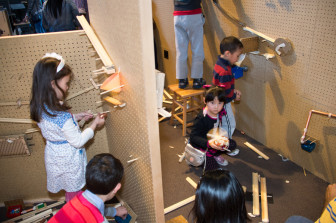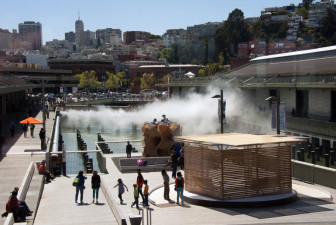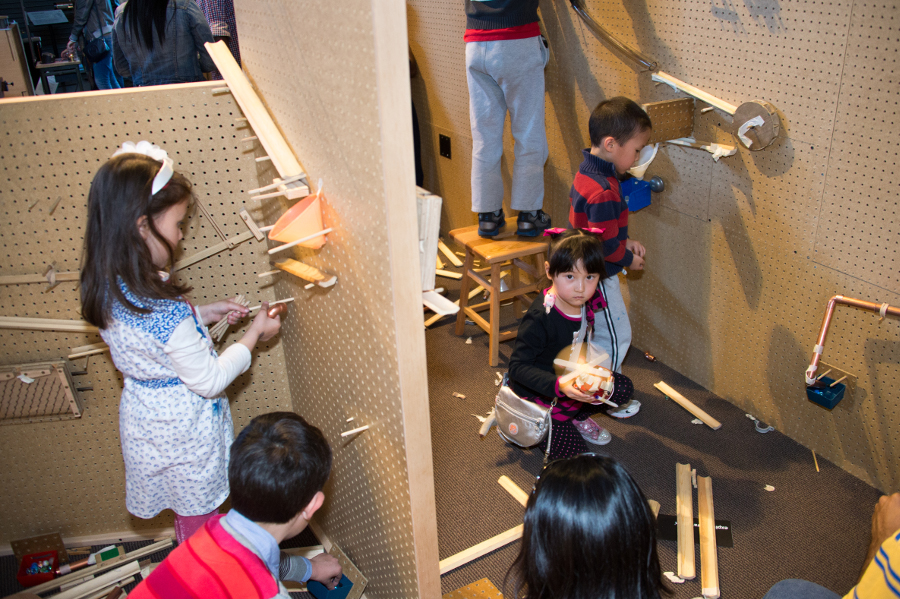 One of the top travel destinations for kids and families happens to be an innovative museum long devoted to out-of-school science activities.
One of the top travel destinations for kids and families happens to be an innovative museum long devoted to out-of-school science activities.
San Francisco’s Exploratorium was recently ranked by users of the travel website Gogobot as one of the nation’s best children’s attractions.
The Exploratorium is a museum of science, art and human perception; it calls itself a learning laboratory that ignites curiosity and creativity.
It’s a powerhouse example of the potential for museums to advance out-of-school science learning — and to assess the impact.
About 130 teens a year are hired as “explainers” who interact with visitors at exhibits and lead demonstrations, said museum spokeswoman Jenny Slafkosky. They build their own skills while assisting others — in keeping with the museum’s learn-by-doing approach.
“We’re leaders in creating an informal learning environment,” Slafkosky said.
For example, the Tinkering Studio encourages visitors to play around, experiment and try new methods to build something.
Other youth programs include XTech, a summer program for middle- and high-school students who are underrepresented in science. The museum also works with community-based organizations in under-resourced neighborhoods.
It offers science for homeschoolers, provides summer camps for kids 7-14 and runs week-long workshops for girls in its Girls Science Institute.
The Exploratorium’s Center for Informal Learning in Schools conducts research on the learning process for kids. It evaluates the impact of informal science learning in out-of-school time.
A better way to evaluate?
Writing in the Spring 2013 issue of Afterschool Matters, Bronwyn Bevan, director of the Exploratorium’s Institute for Research and Learning, and Vera Michalchik of SRI International, questioned the way afterschool STEM programs are assessed. They argued that measuring programs’ impact based on gains in the classroom is not adequate.
This limited way of measuring may explain why evaluations of out-of-school science programs have turned up such mixed results, they wrote.
 “We don’t want to discount the positive things that happen [in out-of-school programs] that may not be tied to the school setting,” Bevan said. In an afterschool program, kids may develop an interest in science and see why it’s important to society, she said. They may discover a future for themselves in science.
“We don’t want to discount the positive things that happen [in out-of-school programs] that may not be tied to the school setting,” Bevan said. In an afterschool program, kids may develop an interest in science and see why it’s important to society, she said. They may discover a future for themselves in science.
Bevan and Michalchik argue for a wider “contextual” approach when evaluating programs. Instead of expecting a direct transfer of knowledge from one setting to another (afterschool program to school classroom) a contextual approach measures a wider variety of ways children display newly gained science fluency. It looks more carefully at the connections between the out-of-school and in-school science experiences.
The authors advocate “research that follows children across settings, especially when it addresses non-dominant communities that are frequently underrepresented in the literature.”
Judging afterschool programs solely on classroom gains can undermine expanded day programs for children in high-poverty schools, they said.
The Exploratorium is located at Pier 15 in the heart of San Francisco’s Embarcadero area. It moved last year from the Palace of Fine Arts in the Marina District.
Financial supporters of Youth Today may be quoted or mentioned in our stories. They may also be the subjects of our stories.































